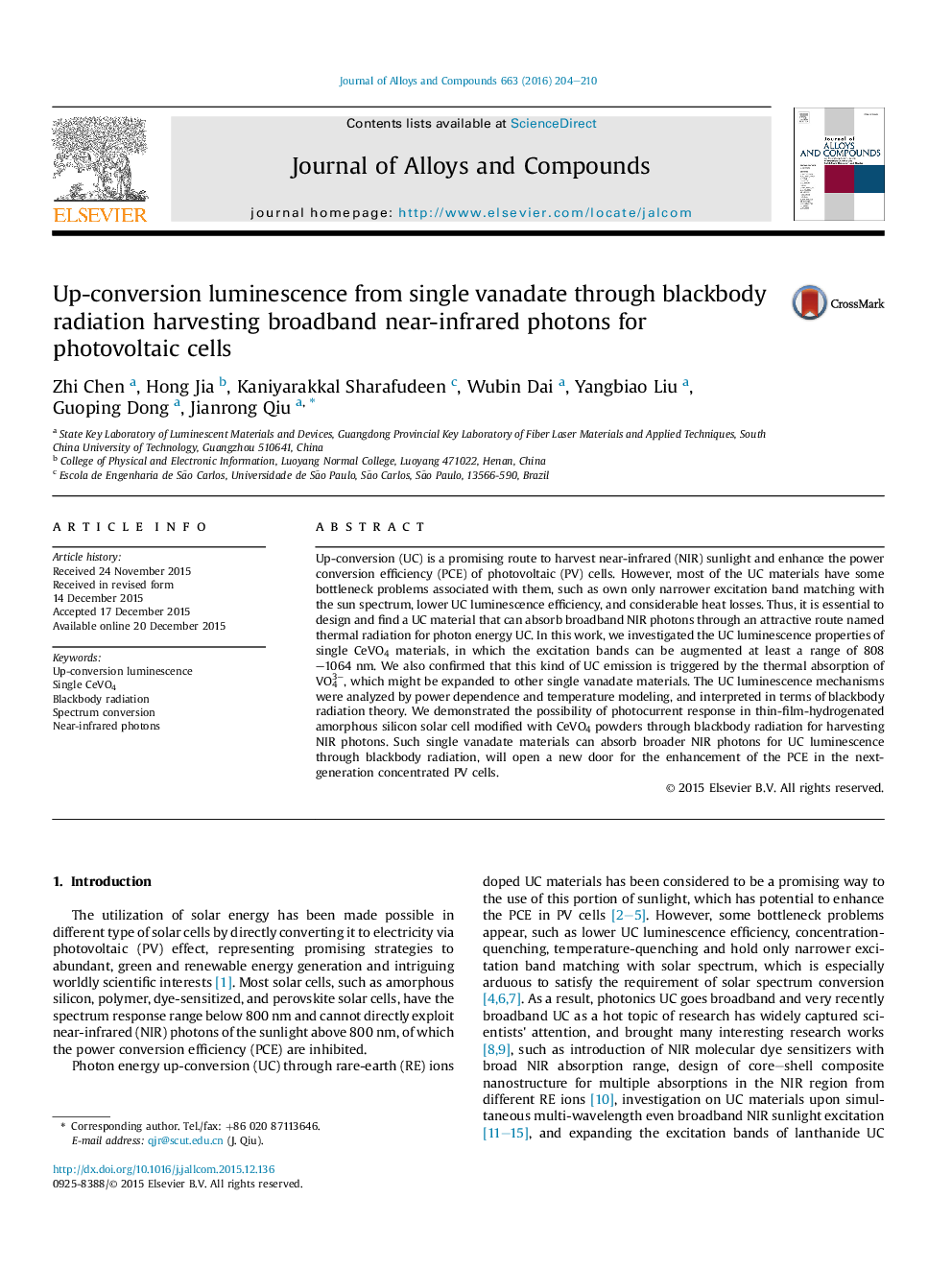| Article ID | Journal | Published Year | Pages | File Type |
|---|---|---|---|---|
| 1606921 | Journal of Alloys and Compounds | 2016 | 7 Pages |
•A strategy to broaden the utilization of NIR sunlight photons was proposed.•Up-conversion luminescence properties of single CeVO4 powders were investigated.•The luminescence was confirmed as blackbody radiation emission from VO43−.•The luminescence mechanism was interpreted in terms of blackbody radiation theory.•The photocurrent response in solar cell coupled with CeVO4 was demonstrated.
Up-conversion (UC) is a promising route to harvest near-infrared (NIR) sunlight and enhance the power conversion efficiency (PCE) of photovoltaic (PV) cells. However, most of the UC materials have some bottleneck problems associated with them, such as own only narrower excitation band matching with the sun spectrum, lower UC luminescence efficiency, and considerable heat losses. Thus, it is essential to design and find a UC material that can absorb broadband NIR photons through an attractive route named thermal radiation for photon energy UC. In this work, we investigated the UC luminescence properties of single CeVO4 materials, in which the excitation bands can be augmented at least a range of 808–1064 nm. We also confirmed that this kind of UC emission is triggered by the thermal absorption of VO43−, which might be expanded to other single vanadate materials. The UC luminescence mechanisms were analyzed by power dependence and temperature modeling, and interpreted in terms of blackbody radiation theory. We demonstrated the possibility of photocurrent response in thin-film-hydrogenated amorphous silicon solar cell modified with CeVO4 powders through blackbody radiation for harvesting NIR photons. Such single vanadate materials can absorb broader NIR photons for UC luminescence through blackbody radiation, will open a new door for the enhancement of the PCE in the next-generation concentrated PV cells.
Graphical abstractFigure optionsDownload full-size imageDownload as PowerPoint slide
